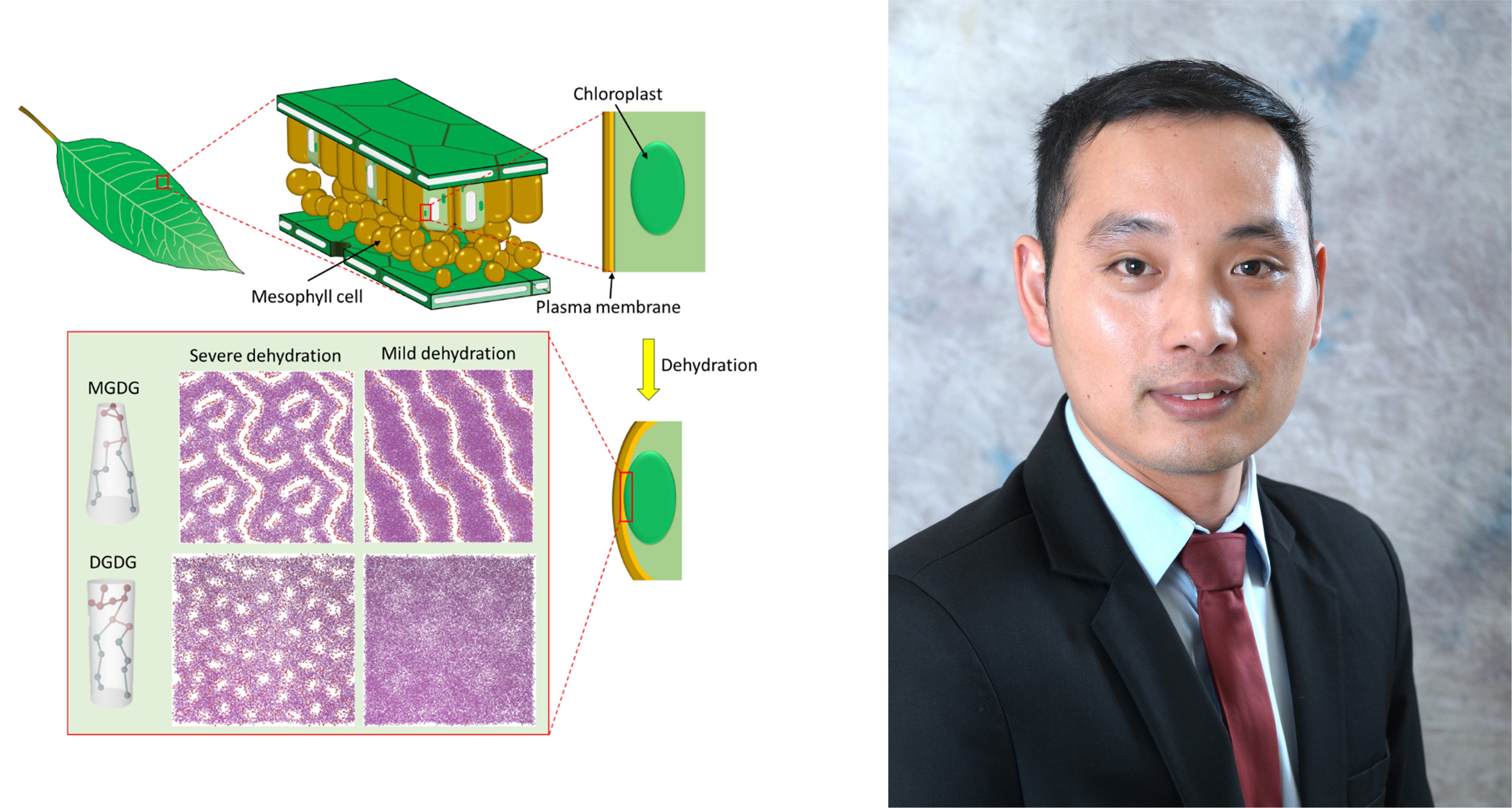MAE researchers reveal how plant chloroplast membrane protects against dehydration
An international study led by MAE Assistant Professor Huang Changjin and team in collaboration with plant biologists from the School of Biological Sciences and Harvard Medical School used molecular-level simulations and mechanics principles to seek a deeper understanding into the protective mechanism of plant chloroplast membrane.
Certain plant species, such as tomato, maize and rice, have been found to survive winter, drought or high salinity by changing the lipid composition of their chloroplast membranes as a response to dehydration. This lipid remodelling ensures the integrity of chloroplasts in which photosynthesis occurs. However, detailed molecular-level understanding of the underlying physical mechanisms are lacking. The research team observed that different types of lipids in the membrane resulted in different membrane fusion patterns which can be explained by simple mechanics/energetics arguments. Such work paves the way for rational genetic engineering of crops with improved tolerance to environmental stresses brought about by climate change.
The study has recently been published in Plant Physiology: https://doi.org/10.1093/plphys/kiab512








